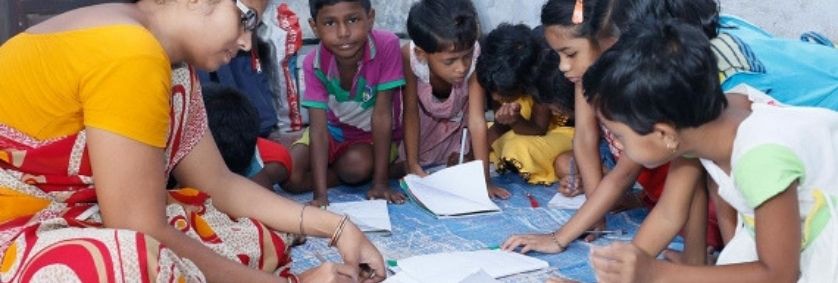Our Blog

12Jun 2019
The Picture of Rural Education in India in 2019
India is considered to have the world's second largest education system. In order to ensure that its rural parts get quality and unique education, however the system faces a lot of challenges. The teachers have to confront a lot of difficulties while teaching. Simultaneously, the problems that affect the education system of the country are so differing & so complicated that the solution isn't based only on one single factor. The main problem that's faced by the education system in rural parts of India is not about lesser funds offered by the Government or lack of proper training to the teaching staff or any political involvement in the work – these undoubtedly contribute to the problem that affects the education system of the country but the main problem lies somewhere else.
What's the main problem with India's rural education system?
Rural India lacks in providing proper infrastructure of schools and there lies the problem with the education system. The students need to go far away from their villages to another place or village in order to seek higher education. That should obviously not be the situation in the twenty-first century.
Moreover, the teachers also seem to be very casual with their jobs. Gaining of knowledge is thus not prioritised resulting in the declining of the education system in rural India. Although some students from villages happen to be really brilliant, lack of interest of the teachers in teaching their students and proper guidance seem to be the hurdles in their education. Actually, it is the single teacher schools in India that create this scenario. According to recent studies, there are about 92,273 single teacher schools all over India accounting for about 8.8% of total schools in the nation. What's more is that there are few rewards for good teaching staff.
Children in rural India are often found to drop out or miss school to help their families with household or farm works.
Has there been any solution to these problems? Lets check out!
The Government has already launched their first integrated programme extending unified support to the states under the name of 'Samagra Shiksha'. The programme is for school education sector and extends from preschool to class 12.
The benefits of Kasturba Gandhi Balika Vidyalaya Scheme has also been extended by the Government. Under the scheme the girls who are from disadvantaged section of the society are provided with residential elementary educational facility from class 6-12.
A lot of NGOs are extending their helping hands to eradicate school drop outs with their supplementary programme of rural education in India. The main motto of their programme is to offer specialised educational support and coaching to the school attendees.
However, with the launch of these Government programmes and NGO's supporting hands, a lot of things have changed in the recent years. There has been a rapid growth of education in rural India.
SHARE THIS
0 Comment(s)
Leave a Comment
Latest Articles
-
Effective Strategies the NGOs Adopt For Persons Wi......
18th Sep, 2024 -
How Do NGOs Proceed For CBR Through Community Mobi......
17th Sep, 2024 -
How Do NGOs For the Physically Disabled Support Th......
07th Jun, 2024 -
How NGOs Help Elevate The Condition Of PWDs?
18th Mar, 2024 -
The Role Of Community-Based Rehabilitation Program......
08th Mar, 2024






